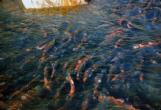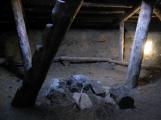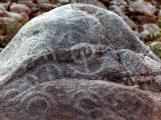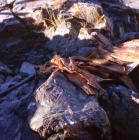1
Before European contact, the local First Nation peoples lived at the joining of the rivers, known as "Kumcheen" for at least five thousand years. Some estimates have pushed the occupation to twelve thousand years, making Lytton one of the oldest continuously occupied sites in North America.3
The pit-house was the winter house of the local First Nation peoples.A practical solution to a sometimes bitter winter environment, the lodging consists of a roof of small poles over a circular pit dug from the soft earth.
These poles are covered in layers of pine boughs, pine needles and grasses to form an insulated roof.
A center hole is left open for both the small heating and cooking fire smoke to escape, and for a pole ladder exit.
Another entrance/exit is made at ground level.
A spacious, open interior is equipped with seating and sleeping areas and becomes a snug home for the winter.
4
A traditional First Nation winter dwelling (pit house).29 September 2004
Taken at Heritage park, outside of Lytton
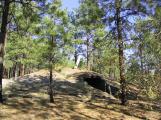
6
Before contact with Europeans metal was a rare commodity, hence the local First Nation peoples were, for practical purposes, still using stone tools.Flint knapping is the art of making sharp arrowheads, knives and other tools from locally found rock.
This almost lost art still has a few practitioners in Lytton.
7
Flint rock used to make pre contact weapons and tools29 September 2004
Taken at Heritage park, outside of Lytton

8
Arrowheads typical of pre contact weapons and tools15 October 2004
Taken at the Lytton Museum and Archives
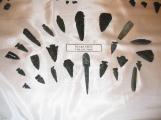
9
Stone mortar and pestle, used to grind grains and dried roots.21 October 2004
Taken at the Lytton Museum and Archives

10
Stone carvings (petroglyphs) and rock paintings (pictographs) are relatively common around Lytton.12
The Fraser River sockeye salmon, once abundant on their return to the spawning grounds, is still a staple food of the First Nation peoples.13
Sockeye Salmon, a staple of the First Nation people's diet, in the Thompson River.1 January 1950
Thompson River
